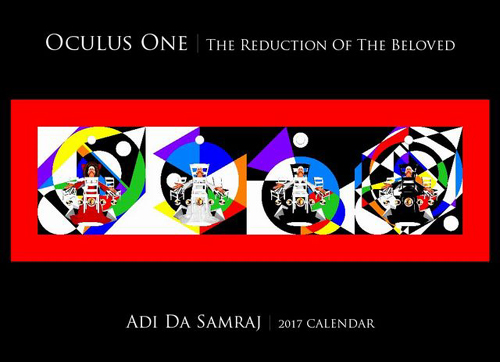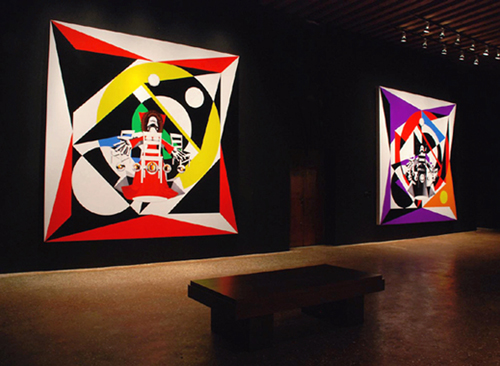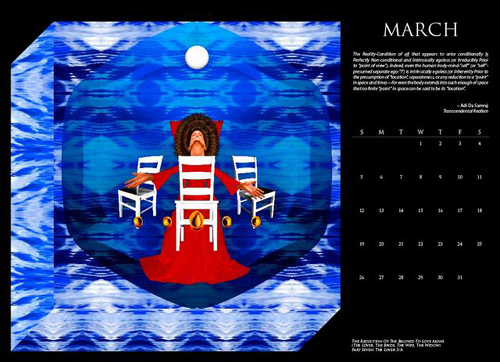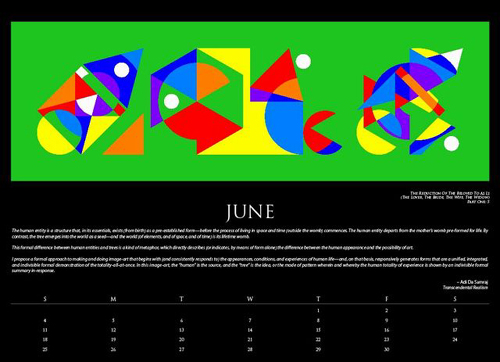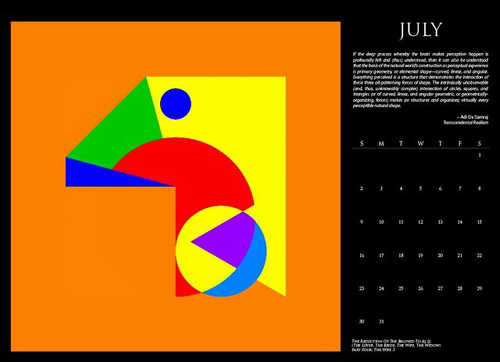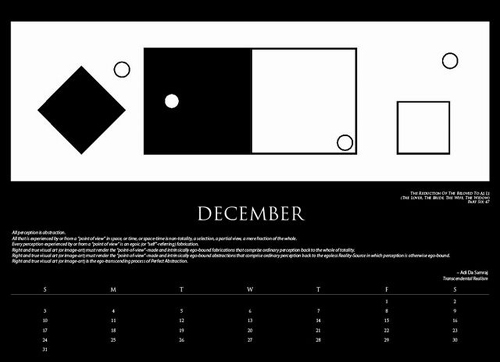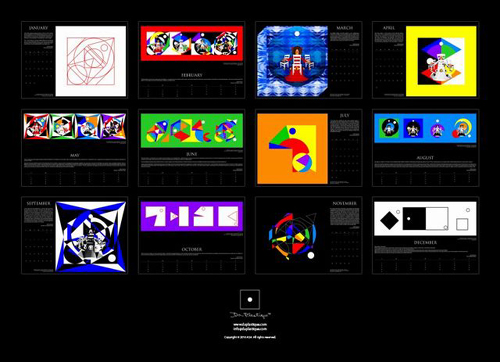2017 Image-Art Calendar | ||||||||||||||
|
In 2008, Adi Da personally directed the development of the first Transcendental Realism calendar of His Divine Image-Art — including its monumental scale, quality of image reproduction, and layout. The calendar has brought great joy and beauty to the home of devotees, Da Plastique public contacts, families and friends for the last eight years. 2017 marks the ninth consecutive year Da Plastique
has produced an Image-Art calendar. We are thrilled to announce
that the 2017 Transcendental Realism calendar is at the printer.
It features radiant imagery from Adi Da's extraordinary suite, Oculus
One: The Reduction Of The Beloved, and it is spectacular! (See
below for sample pages.) This calendar marks the tenth anniversary
of Adi Da's creation of Oculus One in 2007. It primarily
showcases previously unpublished images from the suite (see below).
Enjoy the exquisite geometric and figurative abstraction of Oculus
One throughout the year with this magnificent 2017 calendar. The subtitle of Oculus One — The Reduction Of The Beloved — is a direct reference to Adi Da's thesis on modernism, "The Reduction Of The Beloved To Shape Alone", written during His graduate studies at Stanford University. And, indeed, in Oculus, He restores abstraction to its original, liberating purpose.
Needless to say, the 2017 Image-Art calendar makes a very special gift for friends and family! Purchase Information Price: $95 each (plus shipping, and tax for California residents). Now available at the discounted price of $54! To order: write to Sara Dakin at Da_Plastique_Sales@adidam.org. If you would like to receive your calendars in time for Danavira Mela (December 25), the calendars must be ordered and paid for by Friday, November 18 for international orders, and by Friday, December 2 for domestic orders.
|
| Quotations
from and/or photographs of Avatar Adi Da Samraj used by permission of the copyright
owner: © Copyrighted materials used with the permission of The Avataric Samrajya of Adidam Pty Ltd, as trustee for The Avataric Samrajya of Adidam. All rights reserved. None of these materials may be disseminated or otherwise used for any non-personal purpose without the prior agreement of the copyright owner. ADIDAM is a trademark of The Avataric Samrajya of Adidam Pty Ltd, as Trustee for the Avataric Samrajya of Adidam. Technical problems with our site? Let our webmaster know. |
